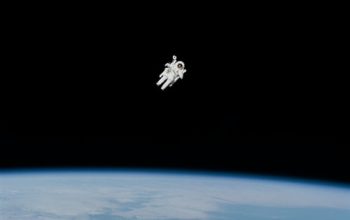Opportunity cost is the cost you face for choosing one decision over the other. While making a purchase decision, everyone makes several decisions based upon various factors. The opportunity cost tells you what the best alternative is. Also, what a person must give up when opting for decisions. The concept is mostly used in economics. Corporations and economists use the opportunity cost concept to choose the best from a wide range of options. Opportunity cost is composed of four components.
Example Of Opportunity Cost
A company wants to buy a new plant for manufacturing. The plant has a high cost. Also, the previous plant output is very low. If they buy a new plant, it will burden the financials of the company. But the productivity becomes double. Now the company has to choose between both options. If the company buys a plant, it will have tight financials for the whole year. On the other side, if they stick with the previous machine, their productivity gets affected. The company must try to choose the option that has less opportunity cost. Before choosing any option, the company must consider the options with a deliberate approach. The company can choose the option by analyzing the components of the opportunity cost. This can help them to choose the option with maximum utility.
Price
This is one of the biggest factors when making a decision. Consumers think about the price range while taking a decision. Price demonstrates the affordability factor of the decision. The income level of the person has an impact on choosing the particular alternative. The one who has a high income may put less focus on price. The person with low income sees price as the top priority in opportunity cost and will go for the option that offers low cost. For example, a person with a low income can go for a brand that gives low-cost products. While evaluating the different options, the core focus will be on low prices.
Time
Time is another component that impacts the decision-making of a customer. In this advanced era, everyone is short of time. The busy schedules make time an important aspect of decision-making. In an opportunity cost, this element shows to what extent customers emphasize time for choosing an alternative. For instance, a brand within 20 minute’s drive is offering a 10% discount on an article. Also, the same article is available near a person’s house at a high price. So, what will be the decision of a customer? Whether he/she chooses to drive 20 minutes or save time by purchasing from the nearby house. It depends upon the individual and the importance of time for him.
Effort
This component links with the effort aspect of the opportunity cost. Whether the customer wants to put more effort while choosing an option that demands energy, the more or less effort for achieving the decision is the customer’s choice. The more effort task needs more time. So the time and effort both show a high influence on the opportunity cost.
Utility
Told by a dissertation help firm, this component relates to the satisfaction of the customer. The more pleasure and satisfaction a person shows, the opportunity cost becomes high. Income plays a vital role in this factor. If the income of a consumer is high. They can afford the luxuries which increase their utility. Every customer wants to opt for the alternative where the opportunity cost will be low with high utility. The decision-making must be done in a way that enhances the utility factor. For example, a person like chocolate spreads of a famous brand. The cost is too high, but it provides him utility. If he/she can afford to buy the chocolate spread of a certain brand. He/She will buy it because it satisfies their cravings. So, utility is influenced by the money factor.
Types of Opportunity Cost
Explicit Opportunity Cost
This is a type of cost where cost is encountered as direct cash. It instantly affects the cash flows of businesses. It is a cost that works on monetary terms. The opportunity cost incurs with the planned approach. It includes wages and rents of the employees. You have to give employees salary. By hiring the employees on a certain salary, a business lets go of the portion of money every month. Also, when dining in your favorite restaurant, you give specific time and money to the place. This is an explicit opportunity cost. When you let go of an alternative in terms of finances and money. The opportunity cost incurs explicitly.
Another example of explicit opportunity cost is when a company has to decide between two options. Whether to conduct the latest marketing campaign or give incentives, these both are financially burdening options. The company has to choose one, and both are important. So, opting for the best alternative will decrease the opportunity cost.
Implicit Opportunity Cost
Implicit cost is a previous cost. The company has already incurred it, and it is a one-time cost. The cost incorporates long-term assets and resources. Implicit opportunity cost in corporations tells how the purchase or incurred cost is utilized at its best. The cost tells the benefit the company misses while opting for the other options. It is the use of previous resources for conducting operations. When the company stops going for new options and uses the existing resources then it is known as implicit opportunity cost. Also, implicit costs are not always so clear-cut. For instance, a company starts a training session for new employees. The time spent on the training session can become productive hours. So the implicit cost is not reflected in financial terms but is impacting the normal business operations.







